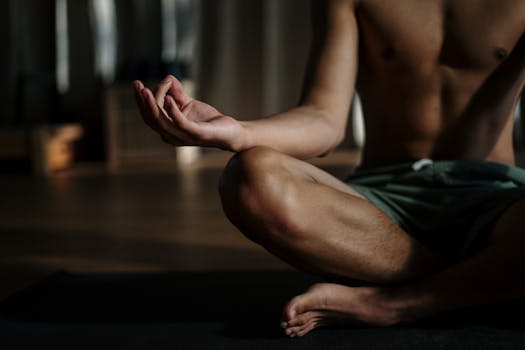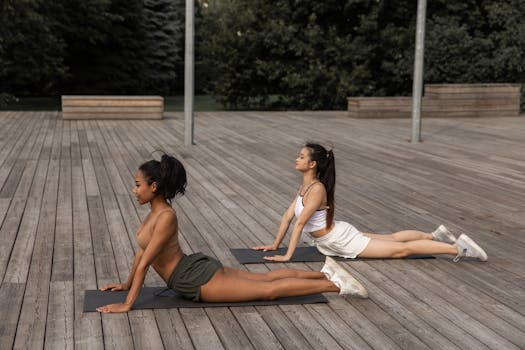Beginner’s Guide to Yoga: Poses and Practices to Start Your Journey
Takeaways: This guide provides beginners with essential information on yoga, including basic poses, practices, and tips to cultivate a fulfilling yoga journey. Embrace the benefits of yoga for your body and mind.
Yoga is more than just a physical practice; it’s a holistic approach to wellness that encompasses the mind, body, and spirit. If you’re new to yoga, you might feel overwhelmed by the variety of styles and poses. This guide will simplify your journey, offering foundational poses and practices to help you ease into yoga and enjoy its numerous benefits.
What is Yoga?

Essential Yoga Poses for Beginners

1. Mountain Pose (Tadasana)
This foundational pose is the starting position for many standing postures. Stand tall with your feet together, shoulders relaxed, and arms at your sides. Engage your core and take deep breaths. This pose teaches you how to ground yourself and find your center.
2. Downward-Facing Dog (Adho Mukha Svanasana)
Start on your hands and knees, tuck your toes, and lift your hips towards the ceiling, forming an inverted ‘V’ shape. This pose stretches the spine, hamstrings, and calves while strengthening the arms and legs. It’s a great way to energize your body.
3. Child’s Pose (Balasana)
This restorative pose is perfect for relaxation. Kneel on the floor, sit back on your heels, and reach your arms forward on the mat. Rest your forehead on the ground and breathe deeply. Child’s Pose helps relieve tension and calm the mind.
4. Warrior I (Virabhadrasana I)
This powerful pose builds strength and confidence. Step one foot back, bend your front knee, and raise your arms overhead. Keep your hips facing forward and engage your core. Warrior I enhances focus and stability.
5. Cat-Cow Stretch (Marjaryasana-Bitilasana)
This dynamic pose sequence helps warm up the spine. Start on your hands and knees, arch your back while inhaling (Cow), and round your spine while exhaling (Cat). Repeat several times to promote flexibility and relieve tension in the back.
Establishing a Yoga Practice

1. Set a Regular Schedule
Consistency is key in yoga. Aim to practice at least 2-3 times a week. Find a time that works for you—whether it’s morning, lunchtime, or evening—and stick to it.
2. Create a Dedicated Space
Designate a quiet area in your home for yoga practice. Having a dedicated space can help you focus and create a calming atmosphere. Consider adding a yoga mat, some cushions, and calming decorations.
3. Listen to Your Body
Yoga is about tuning into your body and respecting its limits. Don’t push yourself into discomfort or pain. Modify poses as needed and focus on your breath to guide you through your practice.
4. Explore Different Styles
Yoga comes in various styles, such as Hatha, Vinyasa, and Yin. Experiment with different classes or online tutorials to find the style that resonates with you. Each style offers unique benefits and experiences.
5. Consider Joining a Class
If you prefer guidance, consider joining a local yoga class. An instructor can help you with alignment, modifications, and support. Many studios also offer beginner-specific classes.
Conclusion

For more insights on yoga, check out these resources: Yoga Journal, DoYouYoga, and Yoga for Beginners.

